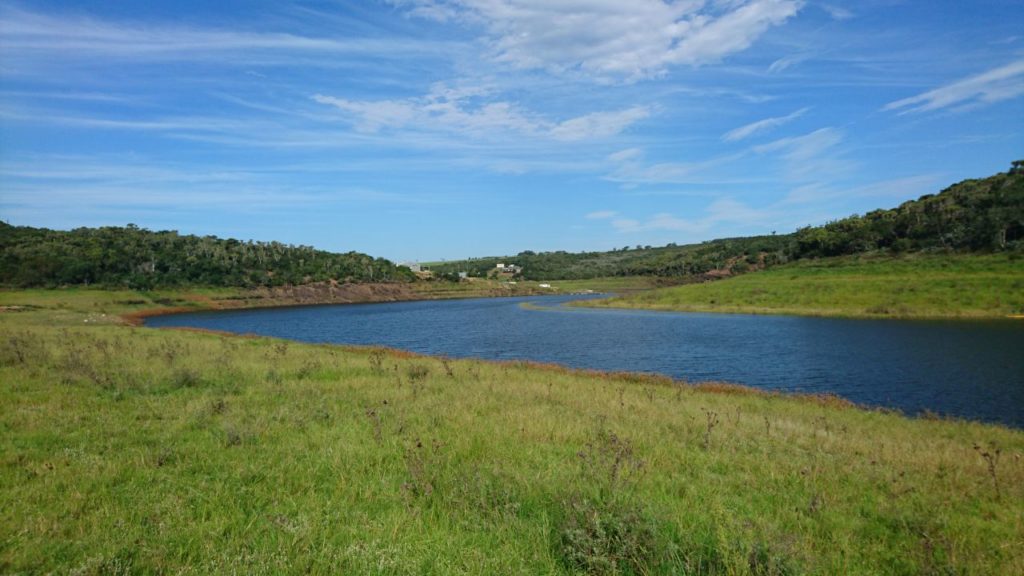While the Department of Water and Sanitation said steady rainfall over the past two weeks had seen several dams across the country overflowing, the situation in the Eastern Cape and Western Cape was worse in places.
In Eastern Cape, the Algoa System – with five dams that serve Nelson Mandela Bay, decreased from 24.7% to 24.5%, while Kouga Dam remained at a critical 10.8%. Loerie Dam dropped from 100.3% to 98%.
Groendal Dam stands at 50.7%, while Impofu dropped from 38.5% to 38.2%.
The Amathole System, with six dams serving Buffalo City increased slightly from 90.4% to 90.7%. Last year this time it was at 73.5%.
Bridle Drift decreased from 81.8% to 81.6%; Nahoon decreased from 97.9% to 96.9%. Laing is down from 100.4% to 100.2%.
The Department of Water and Sanitation’s weekly report indicated that the rain in other parts of the country had been soft but intense enough to soak the soil and replenish groundwater for basic use.
“Improvements in the past two weeks have been noticed in most provinces, namely Gauteng, Mpumalanga, Free State, North West and KwaZulu-Natal. The report shows that national average dam levels have increased significantly from 70.5% last week to 75.2% this week,” the department said.
In Gauteng, the Vaal Dam increased remarkably from 94.7% to 103.5% last week. The Integrated Vaal River System (IVRS), consisting of 14 dams including the Vaal that serve Gauteng, Sasol and Eskom, increased from 83.5% to 87.6% .The system was at 86.8% during the same time last year.
The Bloemfontein System, with four dams serving mainly Mangaung, increased by 7% from 41.4% to 48.4%. Welbedacht is at 72,7%, Knellpoort increased from 4.,3% to 51.3%; Rustfontein increased from 26.4% to 40.4%, while Groothoek Dam experienced the biggest increase from 37.9% to 53.5%.
The Western Cape Water Supply System’s six dams that serve mainly the City of Cape Town decreased from 18.3% to 17.7%. The system was at 24.4% at the same time last year.
Theewaterskloof Dam continues on a week-on-week downward slide from 10.4% to 10.3%. Last year at the same time, the dam was at 21.1%.
Clanwilliam is the only dam that registered some improvement from 6.2% to 6.4%, while Voëlvlei remains stagnant at 14.5%. The City of Cape Town, unlike most parts of the country, experienced insignificant rains last week.
The North West Province has a fair amount of water in its dams to sustain it through the dry season. The Crocodile West increased significantly from 83.3% to 89.6%, while Disaneng is down from 63.2% to 62.8%. Setumo is at 80.3% and Potchefstroom is at 100.8%.
The Umgeni Dam system in KwaZulu-Natal with five dams serving eThekwini and Msunduzi in Pietermaritzburg, increased from 70.5% to 73.7%. The system was at 62% in the same period last year.
eThekwini Municipality considers lifting water restrictions
Midmar Dam decreased from 101.1% to 100.5%, while Inanda has increased remarkably from 62.8% to 70.3%. This has led eThekwini Municipality to consider lifting water restrictions that have been imposed due to the drought.
The Northern Cape average stands at 82.2%, an increase of 0.9% from 81.3% last week. Vaalharts was recorded at 91.1%, a decrease from 94.6% last week.
In the Limpopo province, the dam levels increased from 69.8% to 74.2%. Modjadji is at 28.6%, Nandoni down from 101.8% to 101%, and De Hoop at 95.4%.
In Mpumalanga, levels rose by a fraction from 81% to 81.3%. Buffelskloof is at 82.7% and Bronkhorstspruit is bursting at the seams at 103.8%. – SAnews.gov.za


